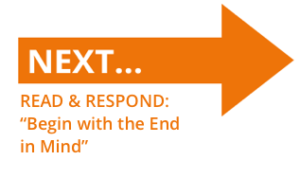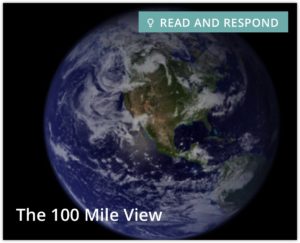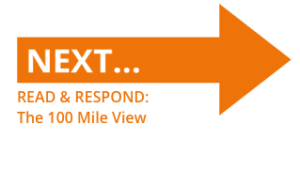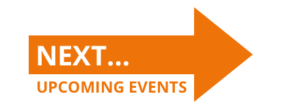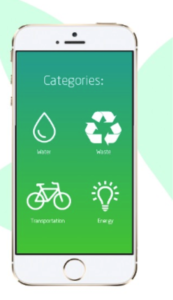
Module Nine – Experiential Learning
Dear Fellows –
This special section of the portal is dedicated to your team projects.
We’ve designed this to give you a variety of tools and examples to help guide you in your own project work.
We’ve mentioned that we’ve been “strategically vague” on how to approach these projects. The strategy part is a desire for each project team to define their own way of making impact during this six-month period.
In this module, you’ll find the final presentations from last cohorts team projects. You’ll also find questions from a 10,000 feet level (Accelerator Grants), a 5,000 feet level (The $1M challenge) and a 100-mile level (Begin with the End in Mind).
You also have the handout from our November session on Evaluative Thinking – perhaps the roadmap image or logic model can serve as a tool to get your team on the same page.
 Use your December meetings to sketch out the road ahead. Plan meetings OUTSIDE of monthly meeting times (maybe before/after sessions?). Brainstorm milestones so you can measure progress.
Use your December meetings to sketch out the road ahead. Plan meetings OUTSIDE of monthly meeting times (maybe before/after sessions?). Brainstorm milestones so you can measure progress.
Remember… the journey IS the reward. Use your recently acquired skills in self-awareness to consider the personal connections you are making with your team members, community members and mentors/coaches. Use your status as a “Fellow” to be an embedded reporter on the front lines of big social issues in our community.
Use the next six months to squeeze every bit of learning out of the program as you can. You get out of it what you put into it…
Seek out encouragement from our entire network. You will be surprised how open people will be to your questions and how you can use your strengths and curiosity to shape your project and better our community.
Have fun. Ask questions. Meet new people. Go deeper. Take a few risks.

Jim
READ: Forming, Storming and Norming
RESPOND
- How can you use your December meeting to maximize the “Forming” stage of your project? What are your team’s mission, goals and expectations? How will you plan your work?
- When will you get to the “storming” stage of breaking larger goals into task-related lists? How can you use the talents and passions of your team members to have maximum impact?
- When does your team approach “norming”? How will you maximize learning in advance of this so you can be focused on concrete deliverables in service of your project goals.
- How can you make the most of the “performing” stage? How can you celebrate what you’ve learned?
Begin with the End in Mind
Stephen Covey devotes Chapter 2 his “Seven Habits” book to “Begin with the End in Mind”. This section is intended to give you three paths you should consider for your team project. I’d loosely call them “logic models”.
The tiles below lead to three approaches to your project work. They include a “real time” Accelerator Grant from the SB Foundation, the $1M Challenge I mentioned in our last session and the broader list of questions I offered the last cohort as a way for them to approach their June presentations.
These three examples (plus the Theory of Change and Logic Model charts we’ve put in the Other Resources (link) section give you several approaches to consider with your group.
READ: 2017 Accelerator Awards Guideline
 This is an actual application from the Santa Barbara Foundation for a new type of grant. This document outlines how an organization can apply for this super-sized grant (up to $500,000).
This is an actual application from the Santa Barbara Foundation for a new type of grant. This document outlines how an organization can apply for this super-sized grant (up to $500,000).
Your team will not be applying for an Accelerator Grant. This is a view of project-based work from a 10,000 feet level.
This application should be used as a tool to help you organize/plan how you will approach your project. Pay particular attention to these three areas of the application:
- Focus – this section sets up a definition for projects that qualify for up to $500,000 grants. Use the bullet points to frame the problem that you/yourteam is addressing (or to “pitch” an existing or hypothetical program). How might each of these “fit” for your team?
- Priority – this list of bullets provides ways to show evidence about your project. How can you use this list as a way to think of ways your project can attract funding?
- The 10 Questions – how can your team use some of these questions frame the story of your project area? How can these questions add context to your “theory of change”?
READ: The $1,000,000 Challenge
EXPLORE SPREADSHEET: Key Categories/Questions to Inform Your Recommendations
 This document (link one) and digital dossier (link two) comprise our original vision for the KHF project in 2015/16 where we envisioned a kind of “shark tank” competition. In this format, teams would propose recommendations for their project focus area to a panel of “judges”.
This document (link one) and digital dossier (link two) comprise our original vision for the KHF project in 2015/16 where we envisioned a kind of “shark tank” competition. In this format, teams would propose recommendations for their project focus area to a panel of “judges”.
This is NOT the format for the June 2018 meeting. No judges (I promise!).
At this 5,000 feet level, the questions are more granular about market segmentation, sector history and key trends.
The questions in both the document and the chart can also provide a roadmap for how to approach your project focus area. In both cases there are questions that provide a structure for your project work.
The team exploring poverty used this format for their final presentation. You can see that here.
READ: The 100 Mile View
 This one pager is the direction we gave the last cohort 60 days before their presentations in June. These nine questions are much more about the PROCESS of the project work than about SPECIFIC RECOMMENDATIONS about your project area.
This one pager is the direction we gave the last cohort 60 days before their presentations in June. These nine questions are much more about the PROCESS of the project work than about SPECIFIC RECOMMENDATIONS about your project area.
This set of questions is a reflection on what you experienced as you researched your project area as well as some outcomes that are broader than your project area.
This is another way to approach your project. The questions in the other two documents can be really useful to providing prompts to answer these questions.

January 18 8:30AM | Who’s In Your Tribe?
Santa Barbara Foundation
February 16 3:00PM | Tell A Simple Story
Santa Barbara Foundation
March 20 8:30AM | When Boards Make a Difference
Santa Barbara Foundation
April 19 3:00PM | Growing Great Ambassadors and the Attitude of Gratitude
TBD
May 15 12:00PM – 5:00PM | Connecting Personal Values
TBD
June 12 2:00PM | Final Presentations and Launch Event
Santa Barbara Foundation
Poverty
This team started with a wide view of POVERTY. They narrowed their focus to three key areas – Food Resources, Homelessness and Children Under 5. Within these focus areas, the team reviewed key non-profits serving each area. They shared findings and best practices for each organization, culminating in a recommendation of how to spend $1M in the area of Poverty through these three lenses.
Activating Alumni Networks
This project group focused on SOCIAL SECTOR LEADERSHIP. They chose a more specific focus of “Activating Alumni Networks”. As you can see in their presentation, they have developed a kind of “best practices” tool kit.
This tool kit has been shared with dozens of non-profits since the team presentation in June 2016.
Environment
This team’s macro focus was on the ENVIRONMENT. They narrowed their focus to SUSTAINABLE URBAN LIVING.
There specific project focused on developing an app that tracks/encourages activities that have positive impact on the environment. The presentation reviews their thinking in detail. This project was really fresh thinking (and supports why we want to give Fellows a wide aperture when thinking about their project areas.
One of this group’s members (Nadra Ehrman) began a master’s program at USC’s Social Entrepreneurship Institute. She used this project as the basis for a new project with a team of her graduate school peers. This team developed a full business plan (prototype, P&L, funding strategy) and is in the process of refining its plan.
Billboard’s #1 Holiday Video (ever)
I know, it’s hard to bebleif!


